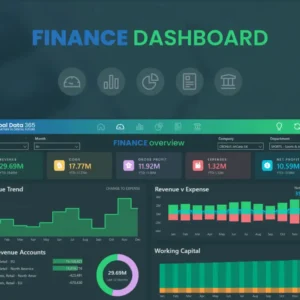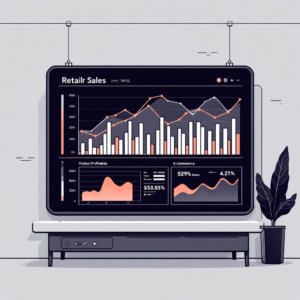In the realm of data-driven decision-making, Power BI stands as a beacon of excellence, empowering organizations to extract actionable insights from complex datasets. While its prowess spans various domains, the potential of Power BI in conducting sentiment analysis on customer feedback often remains untapped. In this blog post, we delve into the synergy between Power BI and sentiment analysis, specifically focused on deciphering customer feedback sentiments.
Decoding Customer Feedback Sentiment Analysis
Customer feedback is a goldmine of insights, offering a window into customer experiences, satisfaction levels, and pain points. Sentiment analysis involves using natural language processing (NLP) techniques to uncover the emotional tone within textual data. Applying this technique to customer feedback enables organizations to gauge customer sentiments as positive, negative, or neutral, enriching their understanding of customer perceptions.
Leveraging Power BI’s Data Integration Capabilities
Before delving into sentiment analysis, assembling and integrating data sources is crucial. Power BI excels in this aspect, allowing seamless amalgamation of diverse datasets. By importing customer feedback from surveys, social media, and reviews into Power BI, analysts can create a comprehensive dataset ready for sentiment analysis.
Text Analysis with Power BI and NLP
Power BI’s integration with NLP libraries empowers analysts to conduct sentiment analysis within the tool itself. Utilizing NLP techniques, Power BI processes textual data, assigns sentiment scores, and categorizes sentiments into positive, negative, or neutral. These sentiments can then be vividly depicted through visually appealing dashboards, providing immediate insights into the emotional undercurrents of customer feedback.
Creating Informative Dashboards
Power BI’s true strength lies in its ability to transform data into engaging visualizations. After sentiment scores are associated with the textual data, analysts can craft interactive dashboards that unveil sentiment trends over time, compare sentiments across different product categories, and even drill down into specific customer comments to understand underlying sentiments. Visualizations could include sentiment trend line graphs, sentiment distribution pie charts, and word clouds highlighting frequently used terms in different sentiment categories.
Unveiling Customer Insights
With sentiment analysis visualizations in hand, organizations can gain deeper insights into customer sentiments, preferences, and pain points. By analyzing sentiment trends for specific products or features, businesses can make informed decisions on product improvements, marketing strategies, and customer service enhancements.
Enhancing Customer Experience and Loyalty
The insights derived from sentiment analysis play a pivotal role in enhancing customer experience and fostering loyalty. Positive sentiments can be leveraged to identify best practices and areas of success, while negative sentiments signal areas that need attention. By acting on customer feedback, organizations demonstrate their commitment to meeting customer needs and expectations.
Informing Product Development Strategies
Power BI’s role in sentiment analysis extends to informing product development strategies. By analyzing sentiments around new product launches or updates, organizations can fine-tune their offerings to align with customer preferences. This data-driven approach ensures that products resonate with customers and stand out in the market.
Overcoming Challenges and Ethical Considerations
While Power BI’s capabilities for sentiment analysis are substantial, challenges such as sarcasm detection, handling slang, and ethical considerations around data privacy must be addressed. Collaborating with linguists, data experts, and legal professionals ensures that sentiment analysis results are accurate, meaningful, and compliant with regulations.
Conclusion
In the era of data-driven decision-making, Power BI emerges as a strategic asset for organizations seeking to decode customer sentiments from feedback. The fusion of Power BI’s data integration, NLP capabilities, and visualization finesse empowers analysts to not only analyze sentiment but also narrate compelling stories about customer perceptions. As organizations strive to elevate customer experience, Power BI guides us in deciphering the sentiments that drive loyalty, shape product strategies, and fuel business success.







